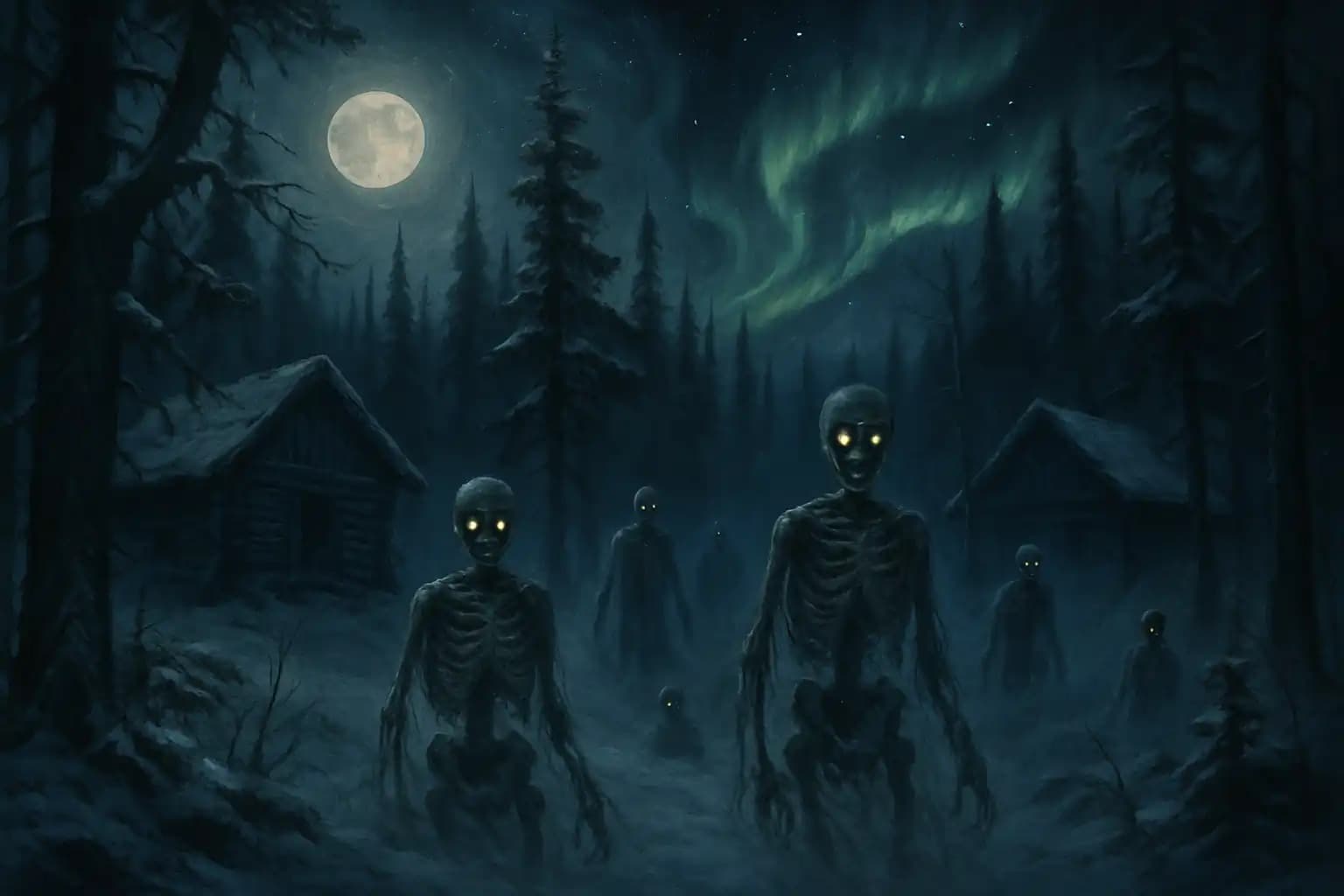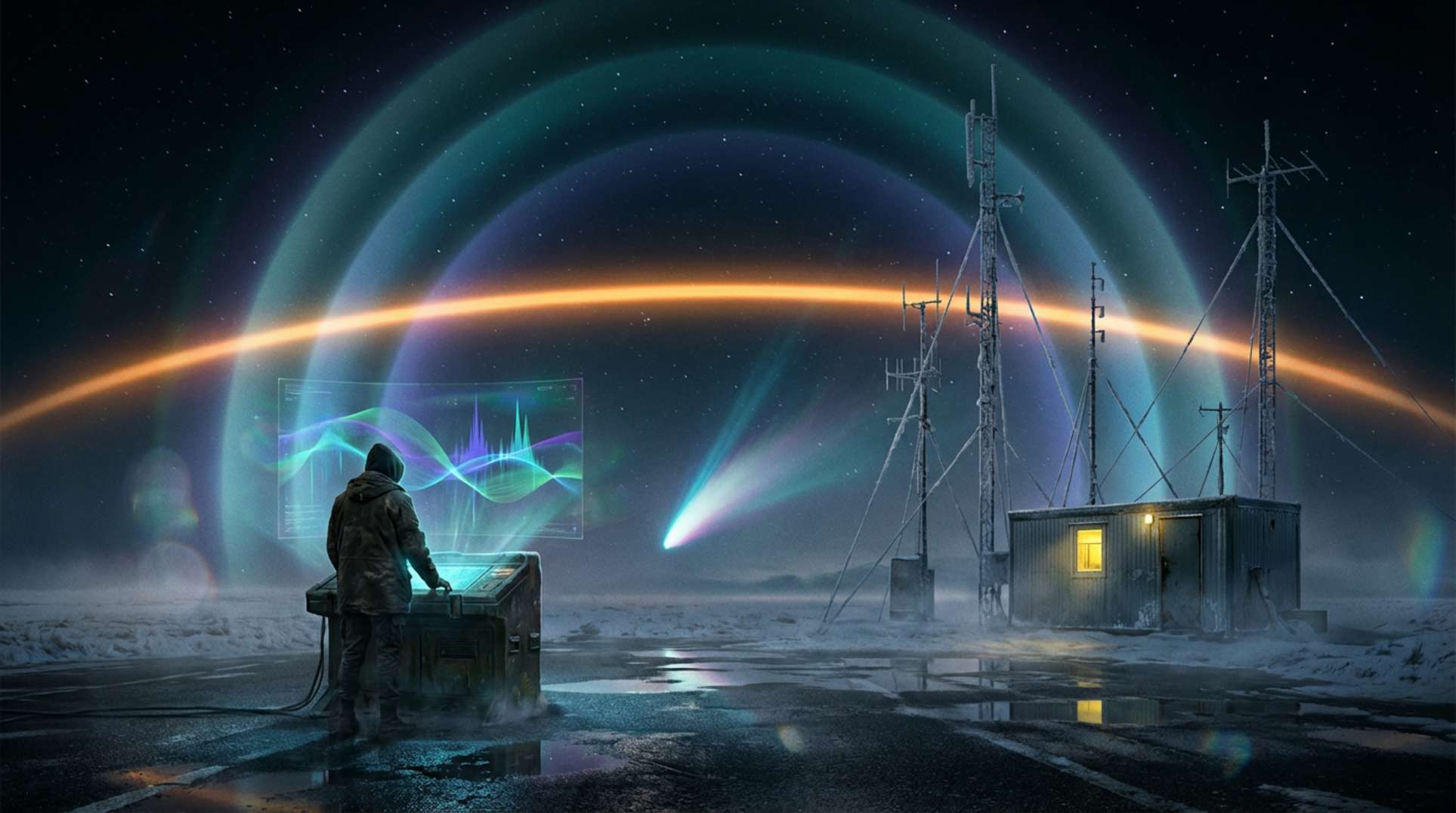If you think the woods are quiet at night in Canada’s far north, think again. In this landscape of endless snowdrifts and haunted pine, listen for the rattle of bones on ice—a chill more ancient than the wind. Welcome to one of Canada’s eeriest legends: the tale of the skeleton spirits, animated remains that wander the wilderness, defying logic, blizzards, and every prepper’s best-laid booby traps.
This haunting narrative—shared in whispers around fires from Yukon to Nunavut—points to a broader tapestry of Canadian folklore. While European fairy tales fill graveyards with poltergeists and Gothic mischief, the Canadian north birthed something colder, sharper, and unnervingly physical. The land, often at the mercy of geophysical chaos (see the compelling evidence for surprise natural resets in cataclysmic geological reports), seems to breed myths where even death refuses to stay buried.
Northern Legends: Origins of Skeleton Spirits in Canadian Lore
The roots of Canada’s skeleton legends are as tangled as the boreal forest. Pop culture fixates on werewolves and wendigos, while Indigenous myths—especially from Algonquian and Dene-speaking peoples—feature supernatural beings that blur the lines between living and dead. Some stories warn of restless ancestors, stripped to bone by ancient betrayal or punishment, doomed to roam until justice is served. In other variants, animated skeletons signal disruption or the approach of transformative events, as if the earth remembers every wrong and summons its own grim reminders.
Scholars note how storytelling traditions among groups like the Cree or Ojibwa often reserved their creepiest tales for winter, a custom echoing through the oral accounts that gave rise to today’s skeleton spirit phenomenon. These stories serve as warnings and inside jokes—a Canadian version of absurdist, macabre wit for fans of underground puppet parodies.
Haunted Wilderness: Where Skeletal Shadows Move
The legends themselves and their habitat amplify the terror. The Great White North’s expansive wilderness, with howling winds and weeks-long darkness, becomes a stage for spirits that thrive on dereliction. Encounters often carry a naturalist’s eye for detail: “I saw bones moving like the wind had learned to walk,” one story goes. This imagery reflects the anxieties explored in analyses of solar storms and geomagnetic chaos. Whether skeletons are ghostly metaphors or something more literal, their invasion of the frontier psyche mirrors how unknowns—be they cosmic rays or ancient curses—make even the bravest Canadians glance over their shoulder when the auroras flicker.
Visits by skeleton spirits are said to spike after harsh winters or strange celestial phenomena, a pattern consistent with reports of magnetic field disruptions and auroral unpredictability, further unpacked in magnetic flip features. Like all good legends, the line between what’s merely atmospheric and what’s supernatural blurs skillfully.
Bones, Warnings, and the Prepper’s Paradox
The enduring power of these skeletons lies not just in fright. They remind us of the past, offer omens of weather, or serve as harbingers of personal doom. In Indigenous lore, such spirits reinforce the importance of honoring the dead and heeding nature’s warnings. For modern audiences—caught between prepping for electromagnetic superstorms or skeptically dissecting satellite footage—these tales echo today’s concerns with disaster readiness and existential dread. Are we so different from the trappers and hunters who watched skeletal figures glide across the snow, heart pounding in the darkness?
This dynamic explains the bizarre, occasionally comic tone that Canadian legends adopt, where utter terror balances with aware, dry humor—much like the tone that pervades explorations of apocalyptic codes or the tongue-in-cheek disaster narratives on technology whistleblower sagas. Even skeletons, it seems, can make for good company if you remember to laugh between shivers.
Skeleton Spirits in the Modern Imagination
The legend is far from fading. Contemporary horror podcasts, internet forums, and comics regularly resurrect the skeleton spirit motif, blending classic Indigenous references with new urban legends. As wilderness recedes and cities grow, this myth adapts—now you’re just as likely to find a “skeleton in the suburbs” sighting as in the north of Yellowknife. These tales resonate for those investigating what lies beneath the earth or speculating on geological oddities and ancient structures hidden underfoot.
Skeleton spirits symbolize the ultimate Canadian paradox: a culture determined to outlive darkness by naming it—and sometimes, by telling it a joke. For more on Canada’s bone-chilling, joke-cracking monsters and the folklore they animate, keep tabs on the shifting shadows at Unexplained.co—because in the North, even the dead have stories to tell.





